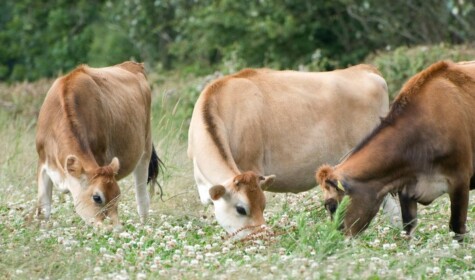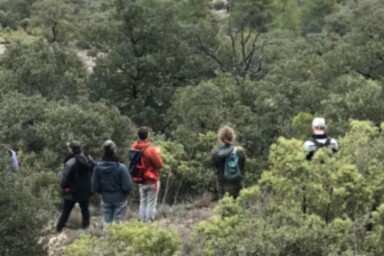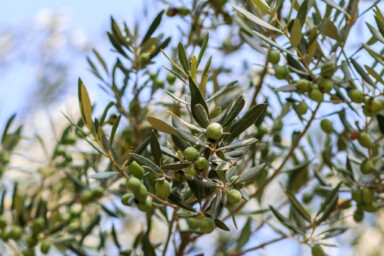The following extract is from Simon Fairlie’s new book Going to Seed: A Counterculture Memoir (Chelsea Green Publishing, February 2022) and is reprinted with permission from the publisher.
Unlike a nuclear family, a community provides an economic foundation for a viable farming operation at a scale appropriate to its size. Monkton Wyld with its quota of visitors and volunteers is well-suited to a small herd of three cows, and indeed has supported just such a herd since 1982, apart from the two years prior to my arrival. In fact, a functioning micro dairy goes back to 1941 when the school began. It may well be the oldest dairy enterprise of its size in Britain.
When I arrived most of the infrastructure for providing this was still in place: a milking parlour with stalls for six cows, cow sheds and a small dairy. Not so long ago there were thousands of such steadings around the country, supporting up to a dozen cows. Every stately home possessed one and so did countless humble smallholdings; the cash flow of family farms was guaranteed by regular payments from the Milk Marketing Board for a few churns left out for collection every morning. But by 2010, virtually all had either been left to go derelict, or else been converted into holiday cottages.
Monkton Wyld’s dairy farm was on the way to a similar fate. There were all the symptoms of a hippie commune in decline. The milking parlour and cowsheds were full of plastic guttering, unused beehives, broken tools, old timber and bags of rubbish. One room was stuffed with detritus from courses in which children were taught to manufacture hideous contraptions out of yoghurt pots, toilet rolls, plastic bags and all the other effluvia of capitalist culture. A tile was missing from the roof above the beehives: instead of replacing the tile – a ten minute job – someone had placed corrugated iron inside to divert the dripping water away from the beehives onto a tie beam, which as a result had rotted away.
The state of the land was similar. The pasture, which hadn’t been grazed or mown for two years, was thick with yellowing tussocks, while briar and bracken patches were invading from all sides. A half-acre orchard was completely engulfed in six-foot-high brambles and bracken. The fencing was in total disrepair. Even today, if you dig into the earth through decades of topsoil, you are likely to uncover hippie archaeology – rotting carpets, plastic sheeting or woven ‘tarpaulins’ that disintegrate into thousands of polypropylene strands – indicating that the ground had once been ‘mulched’ or was the site of an old sweat lodge.
All of this decay could be remedied. It was not a priority for the community, which had more pressing matters to address on the main house. But the rent I was paying Monkton Wyld for accommodation for the scythe business covered the cost of installing fencing and carrying out repairs. My old friend Gill Barron, now a well-known painter, came to visit, decided to stay, and helped me get set up. Eleven years later, I’m glad to say, she is still here. Within a few months we had bought one Jersey cow and borrowed another. Within a few years we had rented a further three acres and milked three Jerseys.
Now, a decade later, the dairy is still functioning, usually with three cows, though we went down to two during the pandemic. Our oldest, Folly, has been with us ten years and is still in top form. After my half-cocked attempts at agriculture in previous years, it is good to have tumbled on something that works.
The reason it works is because the cows, the land and the community are in near-perfect symbiosis. The cows benefit because we provide them with the winter feed they cannot harvest for themselves, in the form of hay, with medical care, and with a more painless death than nature can offer. In return they each give us about four thousand litres of rich creamy milk a year, containing enough fat, protein and calories to feed four people indefinitely. They produce this by grazing Britain’s most abundant, easily grown and biodiverse crop, grass, keeping bracken and brambles at bay, and letting the sunlight in to allow meadow plants to flourish, along with butterflies and other insects. Moreover about 85 per cent of the nutrients that a cow ingests come out the rear end. She harvests biomass, chips and shreds it, bioactivates and digests it, transports it, and extrudes it as the manure that is vital for our acre of vegetable garden, all without using a gram of fossil fuel. Meanwhile the whey from our cheese, along with vegetable and food waste, goes to feed our pigs.
Our cows are the backbone of a traditional mixed farming system that enables us to provide thirty people a day with healthy home-produced food, and to do so with zero packaging and zero food miles. Perhaps, given today’s nucleated social structure, this cannot be widely replicated, but it can be scaled up. There is no reason why schools, hospitals and prisons couldn’t run their own dairy farm providing, in the case of school children, the free milk that Thatcher took away – a nourishing and educational alternative to sugary carbonated beverages. That was precisely what Monkton Wyld did when it was a school feeding seventy pupils and staff from the milk of six cows.
And what if villages reclaimed some ownership of their land, and members of the community supported the agriculture that flourished around them? That’s what real Community Supported Agriculture should look like – not just green hippie types driving miles to pick up their ethically sound vegetables, but every rural settlement with its farm shop and its milk dispensing machine selling all the fresh dairy produce, meat, bread, fruit and vegetables that its farmers can sensibly produce. This must surely be the direction rural people should be taking if we are to eliminate fossil fuels and plastic packaging, while safeguarding the complex relationship we have forged with the natural world through traditional agriculture. The alternative looks increasingly likely to be a diet of hydroponic and lab-grown junk food, courtesy of a hydrogen-powered urban bio-technocracy.
A revival of micro-dairies would also bridge the gulf between the majority of citizens, especially children, and the farm animals and plants that provide their nourishment; this rupture is a direct result of the centralisation of livestock production. Visitors to Monkton Wyld come to gawp at us at milking time and bring their children to view the spectacle as if it was an educational rite of passage, when once it was as banal an activity as changing a baby’s nappy. A generation of urban youth is subjected to propaganda about what goes on in intensive dairy farms, some of it accurate but most of it exaggerated, and comes away with an erroneous interpretation of the bond between cows and humans. Yes, that relationship is open to abuse – as is the bond between married couples, or parent and child – but that doesn’t prevent it being basically a benign one.
Like all farm animals, over the course of several thousand years, cows have adapted to domestication. Literally, that means acceptance into the household (though in the case of cows, not the sitting room). For the most part, cows and oxen are pretty chilled creatures, more so than horses, pigs, sheep, chickens or dogs, all of which are prone at times to over-excitement or panic. Whether grazing, giving suck or chewing the cud, their presence soothes the human spirit. The act of ruminating has become a metaphor for composed contemplation. Even vegans like domesticated cows, and those that visit our farm are hard put to find anything to object to.





